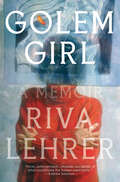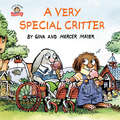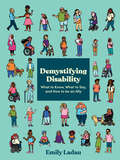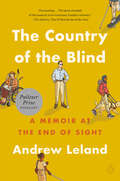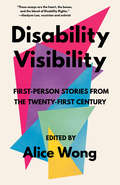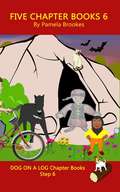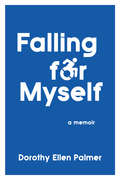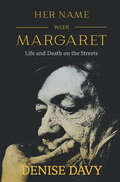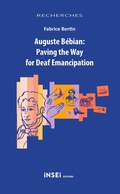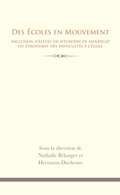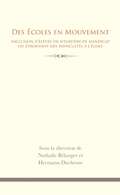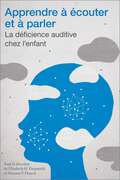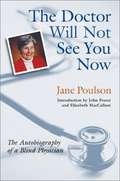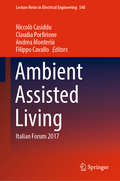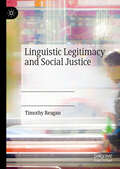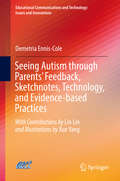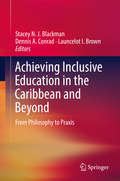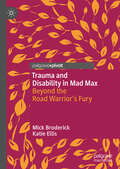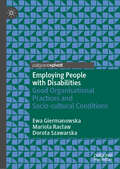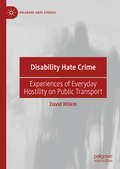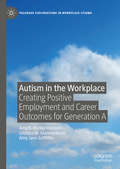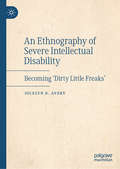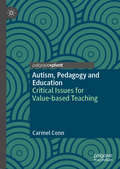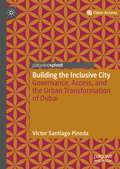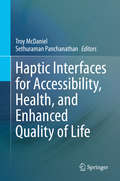- Table View
- List View
Golem Girl: A Memoir
by Riva LehrerThe vividly told, gloriously illustrated memoir of an artist born with disabilities who searches for freedom and connection in a society afraid of strange bodies&“Golem Girl is luminous; a profound portrait of the artist as a young—and mature—woman; an unflinching social history of disability over the last six decades; and a hymn to life, love, family, and spirit.&”—David Mitchell, author of Cloud AtlasWhat do we sacrifice in the pursuit of normalcy? And what becomes possible when we embrace monstrosity? Can we envision a world that sees impossible creatures?In 1958, amongst the children born with spina bifida is Riva Lehrer. At the time, most such children are not expected to survive. Her parents and doctors are determined to "fix" her, sending the message over and over again that she is broken. That she will never have a job, a romantic relationship, or an independent life. Enduring countless medical interventions, Riva tries her best to be a good girl and a good patient in the quest to be cured.Everything changes when, as an adult, Riva is invited to join a group of artists, writers, and performers who are building Disability Culture. Their work is daring, edgy, funny, and dark—it rejects tropes that define disabled people as pathetic, frightening, or worthless. They insist that disability is an opportunity for creativity and resistance. Emboldened, Riva asks if she can paint their portraits—inventing an intimate and collaborative process that will transform the way she sees herself, others, and the world. Each portrait story begins to transform the myths she&’s been told her whole life about her body, her sexuality, and other measures of normal.Written with the vivid, cinematic prose of a visual artist, and the love and playfulness that defines all of Riva's work, Golem Girl is an extraordinary story of tenacity and creativity. With the author's magnificent portraits featured throughout, this memoir invites us to stretch ourselves toward a world where bodies flow between all possible forms of what it is to be human.Priase for Golem Girl&“Lehrer&’s story is a revelation of an inner subjective life—full of tragedy, love, and creativity—pushing against the external social stigmas, cultural narratives, and prejudices surrounding disability. She admits a felt kinship with other &“monsters&” because their bodies were also &“built by human hands,&” but unlike them, she is her own purpose, her own meaning, her own unstoppable golem.&”—Stephen Asma, author of On Monsters: An Unnatural History of Our Worst Fears
A Very Special Critter (Pictureback(R))
by Mercer MayerLittle Critter befriends a new student who uses a wheelchair in this classic full-color storybook! Children ages three to seven will enjoy this sweet story about friendship and acceptance, first published in 1992, with game cards, stickers, and a poster!Little Critter meets a student named Alex who uses a wheelchair. Before long, Little Critter learns Alex is just like everyone else, and they become the best of friends!
Demystifying Disability: What to Know, What to Say, and How to Be an Ally
by Emily LadauAn approachable guide to being a thoughtful, informed ally to disabled people, with actionable steps for what to say and do (and what not to do) and how you can help make the world a more inclusive place ONE OF THE BEST BOOKS OF THE YEAR: NPR, Booklist • &“A candid, accessible cheat sheet for anyone who wants to thoughtfully join the conversation . . . Emily makes the intimidating approachable and the complicated clear.&”—Rebekah Taussig, author of Sitting Pretty: The View from My Ordinary, Resilient, Disabled Body People with disabilities are the world&’s largest minority, an estimated 15 percent of the global population. But many of us—disabled and nondisabled alike—don&’t know how to act, what to say, or how to be an ally to the disability community. What are the appropriate ways to think, talk, and ask about disability? Demystifying Disability is a friendly handbook on the important disability issues you need to know about, including:• Recognizing and avoiding ableism (discrimination toward disabled people)• Practicing good disability etiquette• Ensuring accessibility becomes your standard practice, from everyday communication to planning special events• Appreciating disability history and identity• Identifying and speaking up about disability stereotypes in media Authored by celebrated disability rights advocate, speaker, and writer Emily Ladau, this practical, intersectional guide offers all readers a welcoming place to understand disability as part of the human experience.Praise for Demystifying Disability&“Whether you have a disability, or you are non-disabled, Demystifying Disability is a MUST READ. Emily Ladau is a wise spirit who thinks deeply and writes exquisitely.&”—Judy Heumann, international disability rights advocate and author of Being Heumann &“Emily Ladau has done her homework, and Demystifying Disability is her candid, accessible cheat sheet for anyone who wants to thoughtfully join the conversation. A teacher who makes you forget you&’re learning, Emily makes the intimidating approachable and the complicated clear. This book is a generous and needed gift.&”—Rebekah Taussig, author of Sitting Pretty: The View from My Ordinary Resilient Disabled Body
The Country of the Blind: A Memoir at the End of Sight
by Andrew LelandFINALIST FOR THE PULITZER PRIZE Named one of the best books of the year by: THE NEW YORKER • THE WASHINGTON POST • THE ATLANTIC • NPR • PUBLISHERS WEEKLY • LITHUB"Fascinating...The great strength of this memoir is its voracious, humble curiosity." - The Atlantic, The 10 Best Books of the YearA witty, winning, and revelatory personal narrative of the author&’s transition from sightedness to blindness and his quest to learn about blindness as a rich culture all its own.We meet Andrew Leland as he&’s suspended in the liminal state of the soon-to-be blind: he&’s midway through his life with retinitis pigmentosa, a condition that ushers those who live with it from sightedness to blindness over years, even decades. He grew up with full vision, but starting in his teenage years, his sight began to degrade from the outside in. Soon— but without knowing exactly when—he will likely have no vision left.Full of apprehension but also dogged curiosity, Leland embarks on a sweeping exploration of the state of being that awaits him: not only the physical experience of blindness but also its language, politics, and customs. He negotiates his changing relationships with his wife and son, and with his own sense of self, as he moves from his mainstream, &“typical&” life to one with a disability. Part memoir, part historical and cultural investigation, The Country of the Blind represents Leland&’s determination not to merely survive this transition but to grow from it—to seek out and revel in that which makes blindness enlightening. Brimming with warmth and humor, it is an exhilarating tour of a new way of being.
Disability Visibility: First-Person Stories from the Twenty-First Century
by Alice Wong&“Disability rights activist Alice Wong brings tough conversations to the forefront of society with this anthology. It sheds light on the experience of life as an individual with disabilities, as told by none other than authors with these life experiences. It's an eye-opening collection that readers will revisit time and time again.&” —Chicago TribuneOne in five people in the United States lives with a disability. Some disabilities are visible, others less apparent—but all are underrepresented in media and popular culture. Activist Alice Wong brings together this urgent, galvanizing collection of contemporary essays by disabled people, just in time for the thirtieth anniversary of the Americans with Disabilities Act,From Harriet McBryde Johnson&’s account of her debate with Peter Singer over her own personhood to original pieces by authors like Keah Brown and Haben Girma; from blog posts, manifestos, and eulogies to Congressional testimonies, and beyond: this anthology gives a glimpse into the rich complexity of the disabled experience, highlighting the passions, talents, and everyday lives of this community. It invites readers to question their own understandings. It celebrates and documents disability culture in the now. It looks to the future and the past with hope and love.
Five Chapter Books 6: Decodable Books for Phonics Readers and Dyslexia/Dyslexic Learners (DOG ON A LOG Chapter Books #Volume 6)
by Pamela BrookesDecodable Chapter Books for Phonics Readers and folks with a Dyslexic Learning Style. <P><P>This collection is the five books in Step 6 of the DOG ON A LOG Chapter book series. <P><P>The books are: <P><P>The Colt </br> The Gold Bolt </br> Hide In The Blinds </br> The Stone Child </br> Tolt The Kind Cat <P><P>Sight Words: </br> a, are, as, be, come, comes, could, do, does, for, from, go, goes, has, have, he, her, here, his, I, into, is, me, Ms., my, no, of, OK, onto, or, pull, pulls, push, put, puts, said, say, says, see, sees, she, should, so, some, talk, talks, the, their, there, they, to, walk, walks, want, wants, was, we, what, where, would, you, your, yours <P><P>Each book has about 1,390 to 2,000 total words <P><P>These are Step 6 Chapter books. <P><P>The DOG ON A LOG Books series are for phonics readers and folks with a dyslexic learning style. The words used reflect the inclusion of 1 to 3 new phonics rules in each step. There are five books at each step. <P><P>The chapter books are written in a chapter format with one picture in most chapters. They are longer, have more detail, and sometimes offer more complexity than the Let’s GO! Books. They’re great for practicing known and new phonics rules. They’re also just fun reading. <P><P>DOG ON A LOG Let’s GO! Books are shorter versions of DOG ON A LOG Chapter books. Let’s GO! books tell the same stories with about 8 pictures and only a few sentences per page. They’re perfect as an introduction to the new phonics rules or simply for fun reading for younger kids. <P><P>DOG ON A LOG Phonics Progression <P><P>Step 1: Consonants, primary sounds Short vowels Digraphs: ch, sh, th, wh, ck 2 and 3 sound words Possessive ‘s <P><P>Step 2: Bonus letters (f, l, s, z after short vowel) “all” –s suffix <P><P>Step 3: ang, ing, ong, ung, ank, ink, onk, unk <P><P>Step 4: Consonant Blends to make 4 sound words 3 and 4 sound words ending in –lk, -sk <P><P>Step 5: Digraph blends –nch to make 3 and 4 sound words Silent e, including "-ke" <P><P>Step 6: ild, old, olt, ind, ost <P><P>Step 7: 5 sounds in a closed syllable word plus suffix -s (crunch, slumps) 3 letter blends and up to 6 sounds in a closed syllable word (script, spring) <P><P>Step 8: Two syllable words with 2 closed syllables, not blends (sunset, chicken, unfit) <P><P>WATCH FOR MORE STEPS AND BOOKS COMING SOON <P><P>For information on upcoming books see dogonalogbooks.com or visit our Facebook page.
Falling for Myself
by Dorothy Ellen PalmerIn this searing and seriously funny memoir, Dorothy Ellen Palmer falls down, a lot, and spends a lifetime learning to appreciate her disability. Born with two very different, very tiny feet, she was adopted as a toddler by an already wounded 1950s family. From childhood surgeries to decades as a feminist teacher, mom, improv coach and unionist, she tried to hide being different. But now, standing proud with her walker, she's sharing her journey. Navigating abandonment, abuse and ableism, she finds her birth parents and a new chosen family in the disability community.
Her Name Was Margaret: Life and Death on the Streets
by Denise DavyAt age eighteen, Margaret Jacobson was admitted to the Ontario Hospital, later renamed the Hamilton Psychiatric Hospital. Years later, she died homeless and alone in the city. With meticulous research and deep compassion Denise Davy has pieced together Margaret's story – from promising student to patient, to homeless woman, to an unmarked grave – and asks us to look hard at the system that buried her there.
Auguste Bébian: Paving the Way for Deaf Emancipation
by Fabrice BertinPublished in French and English by INSEI Editions, Suresnes, France. English edition distributed throughout the world by Gallaudet University Press. To some, he is a mythical figure; to others, he is unknown. Auguste Bébian (1789-1839) reflects society’s ambivalence toward Deaf history: sometimes recognized, often ignored. In the wake of Abbé de l’Épée, whose name is remembered in posterity and who demonstrated that the large-scale education of Deaf people was possible, Auguste Bébian was nonetheless a key player in an unprecedented upheaval, which in many ways went beyond the educational sphere. The goal of this research on Auguste Bébian, combining biographical elements and analysis of his thinking in unprecedented ways, is not to deconstruct the myth, but rather to decipher the messages it conveys, and to understand what it tells us, indirectly, about the Deaf experience. Born in 1789 in Guadeloupe, part of the French West Indies, it was on the other side of the Atlantic Ocean, in France, that Auguste Bébian fulfilled most of his destiny. While living at the National Institution for the Deaf in Paris at the beginning of the 19th century, his daily contact with the young students made him the first known hearing person in France to achieve true mastery of sign language, the natural language of Deaf people, and a deep understanding of its inherent culture. On becoming a teacher, he constantly defended the use of sign language as a linguistic system in its own right in order to awaken the intelligence of Deaf children, to whom “we pay no more attention than to the sunlight that shines on us every day.” His numerous publications display a level of modernity rarely seen before or since. This biographical and historical study shows how the passion evinced by Auguste Bébian was a crucial link in the chain of events that led to the emancipation of Deaf people.
Des Ecoles en mouvement
by Hermann Duchesne Nathalie BelangerFaire de la diversité une force constructive qui contribue à la compréhension mutuelle entre individus et entre groupes constitue actuellement un discours central des sociétés occidentales. En éducation, ce discours est repérable dans la pratique inclusive. Ce mouvement en faveur de l'inclusion de tous les élèves, quels que soient leurs attributs individuels ou caractéristiques personnelles, épouse cependant différents contours, génère différentes significations selon les contextes où il prend racine et évolue. Cet ouvrage examine la mise en oeuvre de ces discours en pratique. Les auteurs présentent, à partir d'une approche qualitative et d'outils d'enquête communs, des « écoles en mouvement », des écoles qui se veulent inclusives au Canada, en France, en Grande-Bretagne et en Italie, présentant une diversité de situations et d'exemples tirés de ces contextes divers. Cet ouvrage diffère des manuels qui présentent généralement ce que l'on doit faire et opte pour une investigation empirique qui permet de regarder ce que veut concrètement dire l'inclusion en milieu scolaire.
Des Écoles en mouvement: Inclusion d'élèves en situation de handicap ou éprouvant des difficultés à l'école (Éducation)
by Bélanger, Nathalie; Duchesne, HermannLes auteurs présentent, à partir d’une approche qualitative et d’outils d’enquête communs, des « écoles en mouvement », des écoles qui se veulent inclusives au Canada, en France, en Grande-Bretagne et en Italie, présentant une diversité de situations et d’exemples tirés de ces contextes divers. Faire de la diversité une force constructive qui contribue à la compréhension mutuelle entre individus et entre groupes constitue actuellement un discours central des sociétés occidentales. En éducation, ce discours est repérable dans la pratique inclusive. Ce mouvement en faveur de l’inclusion de tous les élèves, quels que soient leurs attributs individuels ou caractéristiques personnelles, épouse cependant différents contours, génère différentes significations selon les contextes où il prend racine et évolue. Cet ouvrage examine la mise en œuvre de ces discours en pratique. Les auteurs présentent, à partir d’une approche qualitative et d’outils d’enquête communs, des « écoles en mouvement », des écoles qui se veulent inclusives au Canada, en France, en Grande-Bretagne et en Italie, présentant une diversité de situations et d’exemples tirés de ces contextes divers. Cet ouvrage diffère des manuels qui présentent généralement ce que l’on doit faire et opte pour une investigation empirique qui permet de regarder ce que veut concrètement dire l’inclusion en milieu scolaire. Publié en français
Apprendre à écouter et à parler: La déficience auditive chez l’enfant (Éducation)
by Elizabeth M. Fitzpatrick et Suzanne P. DoucetLa déficience auditive a un impact considérable sur plusieurs aspects du développement de l’enfant, y compris sur les habiletés de communication, l’apprentissage scolaire, les habiletés sociales et, au final, la qualité de vie de l’enfant et de sa famille. Par le passé, la déficience auditive présentait des obstacles presque insurmontables. De nos jours, la technologie et les techniques d’intervention permettent de mieux répondre aux besoins des enfants ayant une perte d’audition, et donc de les aider à devenir des membres à part entière de la société. Le dépistage précoce et la technologie d’amplification auditive font en sorte que nous vivons à présent une période charnière dans le domaine de l’éducation des enfants ayant une surdité. Cette éducation nécessite tout de même une intervention spécialisée de la part d’une équipe de professionnels, et ce, en collaboration étroite avec les parents. Compte tenu des approches novatrices dans le développement de méthodes d’apprentissage du langage verbal chez les enfants présentant des troubles de l’audition, la communauté internationale mise davantage sur la formation et le perfectionnement des professionnels. Appuyées par une équipe multidisciplinaire d’experts dans le domaine, les deux auteures abordent les principales problématiques médicales, technologiques, éducatives et sociales liées à ces troubles.Publié en français
The Doctor Will Not See You Now
by Jane PoulsonA spiritual autobiography by Dr. Poulson takes the reader by the arm through the story of her career as a sighted medical scientist who became blind in the first year of her professional career. No reader will fail to be astonished and inspired by her accomplishments and optimism.
Ambient Assisted Living: Italian Forum 2017 (Lecture Notes in Electrical Engineering #540)
by Andrea Monteriù Filippo Cavallo Niccolò Casiddu Claudia PorfirioneThis book documents the state of the art in the field of ambient assisted living (AAL), highlighting the impressive potential of novel methodologies and technologies to enhance well-being and promote active ageing. It covers a broad range of topics, with sections on technological sensors and platforms, social robotics for assistance, assistance and care applications, health and medical support methodologies and technologies, as well as the analysis, modelling and design of AAL services. <P><P> The book comprises a selection of the best papers presented at the 8th Italian Forum on Ambient Assisted Living (ForitAAL 2017), which was held in Genoa, Italy, in June 2017 and brought together researchers, technology teams and professional associations, as well as representatives of the Italian regions and advisors to the Italian Ministry of Education, University and Research, with the goal of developing a consensus on how to improve provisions for the elderly and impaired. The respective contributions offer valuable insights into how the latest advances can help address the needs of the elderly and those with chronic health conditions. They also underscore the need for AAL to continue moving toward multidisciplinary integration, so as to embrace the various disciplines that place the user of services at the centre of the design process.
Linguistic Legitimacy and Social Justice
by Timothy ReaganThis book examines the nature of human language and the ideology of linguistic legitimacy – the common set of beliefs about language differences that leads to the rejection of some language varieties and the valorization of others. It investigates a broad range of case studies of languages and dialects which have for various reasons been considered 'low-status' including: African American English, Spanglish, American Sign Language, Yiddish, Esperanto and other constructed languages, indigenous languages in post-colonial neo-European societies, and Afrikaans and related language issues in South Africa. Further, it discusses the implications of the ideology of linguistic legitimacy for the teaching and learning of foreign languages in the US. Written in a clear and accessible style, this book provides a readable and pedagogically useful tool to help readers comprehend the nature of human language, and the ways in which attitudes about human language can have either positive or negative consequences for communities and their languages. It will be of particular interest to language teachers and teacher educators, as well as students and scholars of applied linguistics, intercultural communication, minority languages and language extinction.
Seeing Autism through Parents’ Feedback, Sketchnotes, Technology, and Evidence-based Practices (Educational Communications and Technology: Issues and Innovations)
by Demetria Ennis-ColeSeeing Autism is a comprehensive but easy-to-understand guidebook for caretakers, parents, educators, counselors, therapists, and researchers on various aspects of rearing and supporting children with autism spectrum disorder. It provides textual and visual information on technology tools, symptoms, diagnosis, auditory, sensory, visual, physical, and educational issues, as well as strategies and practices to help children on the Autism Spectrum reach their potential. Seeing Autism uniquely capitalizes on sketchnotes, a visual thinking tool, to communicate information and practices. Sketchnotes provide a unique space that can help the reader think differently, generate a variety of ideas, explore alternatives, and develop constructive points for expressing ideas and developing visual communication aids. This book will assist parents, educators, and professionals in schools (counselors, school psychologists, librarians) who work with children diagnosed with ASD; it will help readers increase their knowledge of autism and gain an appreciation for evidence-based practices and forms of technology that can be used to support learners on the autism spectrum. “This book is a call to arms and is as much a resource for the family friend as it is for the provider coming to the home. In the book Seeing Autism, Dr. Demetria Ennis-Cole helps individuals gain an incredible perspective and learn the struggles, challenges and joys of families rearing children, teens and adults on the spectrum. This book covers the entire spectrum and is a fantastic mix of research, parent perspective, and even sketchnotes for visual learners. The material is well-balanced and is a great resource to support individuals on the spectrum at home, in the community or in the classroom." Brad McGarryFather, Speaker, Author and Director of the Autism Initiative at Mercyhurst University
Achieving Inclusive Education in the Caribbean and Beyond: From Philosophy to Praxis
by Dennis A. Conrad Launcelot I. Brown Stacey N. BlackmanThis book offers an international perspective of philosophical, conceptual and praxis-oriented issues that impinge on achieving education for all students. It sheds light on the historical, systemic, structural, organizational, and attitudinal barriers that continue to be antithetical to the philosophy and practice of inclusive education within the Caribbean. The first section of the book examines how globalized views of inclusion informed by philosophical ideas from the North have influenced and continue to influence the equity in education agenda in the region. The second section considers how exclusion and marginalization still occur across selected Caribbean islands. It provides both quantitative and qualitative data about the nature and experience of exclusion in selected Caribbean islands, the UK and USA. The third section tackles the practical realities of transforming education systems in the Caribbean for inclusion. In particular, it identifies teacher practices as the main site of interrogation that needs to be tackled if inclusion is to be successful. The fourth and final section examines the contribution of principals and exemplars to the development and advocacy for inclusive education. It discusses how educational leadership is understood, as well as the role of school principals in making inclusion a reality in schools, the challenges experienced and the qualities of education leaders.
Trauma and Disability in Mad Max: Beyond the Road Warrior’s Fury
by Katie Ellis Mick BroderickThis book explores the inter-relationship of disability and trauma in the Mad Max films (1979-2015). George Miller’s long-running series is replete with narratives and imagery of trauma, both physical and emotional, along with major and minor characters who are prominently disabled. The Mad Max movies foreground representations of the body – in devastating injury and its lasting effects – and in the broader social and historical contexts of trauma, disability, gender and myth.Over the franchise’s four-decade span significant social and cultural change has occurred globally. Many of the images of disability and trauma central to Max’s post-apocalyptic wasteland can be seen to represent these societal shifts, incorporating both decline and rejuvenation. These shifts include concerns with social, economic and political disintegration under late capitalism, projections of survival after nuclear war, and the impact of anthropogenic climate change.Drawing on screen production processes, textual analysis and reception studies this book interrogates the role of these representations of disability, trauma, gender and myth to offer an in-depth cultural analysis of the social critiques evident within the fantasies of Mad Max.
Employing People with Disabilities: Good Organisational Practices and Socio-cultural Conditions
by Ewa Giermanowska Mariola Racław Dorota SzawarskaDeveloping better employment and management practices for a diverse workplace is quickly becoming a major concern amongst most modern organisations; however, a lack of research into good practices has a limiting effect. Dealing specifically with disabilities, this pioneering work is based on international research spanning several European countries to demonstrate best practice. Aiming to fill a gap in knowledge, the authors offer interdisciplinary insights into managing diversity in the workplace, taking into account various social and cultural contexts. Providing analysis and recommendations for adapting organisational practices to different workplace settings, this Palgrave Pivot is a vital read for scholars of HRM and diversity management, as well as policy-makers and practitioners.
Disability Hate Crime: Experiences of Everyday Hostility on Public Transport (Palgrave Hate Studies)
by David WilkinThis book examines the experiences of disabled people on public transport to reveal the everyday abuses that many experience there, and the resilience that they need in order to conduct an ordinary life. This work represents an intertwining of personal journeys, with its author writing from first-hand experience, and now working as one of the leading researchers of disability hate crime (DHC) in the UK. DHC is an under-researched area and the findings in this book have implications beyond the public transport context. This book draws on a sample of 56 victim-participants and includes data drawn from public transport regulators, service operators and staff in the UK. Wilkin argues that established legislation needs to be recognised and implemented by regulatory and local authorities in order to reach equality objectives on public transport. Each chapter is clearly structured, accessibly written and includes key definitions which will speak to practitioners and academics with an interest in victimology, policing, social policy, gender studies, disability studies, migration studies, equality studies and religious studies. This book also examines how effectively authorities and service providers safeguard disabled people on UK public transport and reveals adaptive approaches to researching with disabled people.
Autism in the Workplace: Creating Positive Employment and Career Outcomes for Generation A (Palgrave Explorations in Workplace Stigma)
by Amy E. Hurley-Hanson Cristina M. Giannantonio Amy Jane GriffithsThis book explores the career experiences of Generation A, the half-million individuals with autism spectrum disorder (ASD) who will reach adulthood in the next decade. With Generation A eligible to enter the workforce in unprecedented numbers, research is needed to help individuals, organizations, and educational institutions to work together to create successful work experiences and career outcomes for individuals with ASD. Issues surrounding ASD in the workplace are discussed from individual, organizational, and societal perspectives. This book also examines the stigma of autism and how it may affect the employment and career experiences of individuals with ASD. This timely book provides researchers, practitioners, and employers with empirical data that examines the work and career experiences of individuals with ASD. It offers a framework for organizations committed to hiring individuals with ASD and enhancing their work experiences and career outcomes now and in the future.
An Ethnography of Severe Intellectual Disability: Becoming 'Dirty Little Freaks'
by Jocelyn D. AveryIn this ethnographic investigation of a special education needs college in Australia, Jocelyn D. Avery explores how the self-identity of people with severe intellectual identities is influenced by carers and support people in their lives. Employing theoretical foundations of self-identity and embodiment and drawing largely on Mary Douglas’s (1996) notions of ritual and hygiene, purity and danger, Avery argues that students in this environment are treated as though they exist in a vacuum, rather than a highly complex social environment: strategies to ‘contain’ their difficult selves ultimately lead to continued confinement, as if the students themselves were ‘contaminated’. In the midst of this much-needed ethnography, Avery meditates on her own role: matters of consent, communication, and cooperation pose a challenge to anthropological engagement with severe intellectual disability, but researcher ethics and positionality have their own difficulties. The reflection provided here will provide a guide for future researchers to sensitively engage with people with disability.
Autism, Pedagogy and Education: Critical Issues for Value-based Teaching
by Carmel ConnThis book discusses critical issues concerning autism and education, and what constitutes effective pedagogy for this group of learners. Autism is a high-profile area within the discipline of special education, and the issue of how to teach autistic learners remains a contested one: recent theorising has questioned a techno-rationalist approach that places the burden of change on the autistic pupil. The author explores the values that underpin educational approaches within existing pedagogical practice: while these approaches have their individual merits and shortcomings, this book introduces and expands upon a strengths-based approach. This book will appeal to students and scholars of autism and education, with particular regard to teaching autistic learners.
Building the Inclusive City: Governance, Access, and the Urban Transformation of Dubai
by Victor Santiago PinedaThis Open Access book is an anthropological urban study of the Emirate of Dubai, its institutions, and their evolution. It provides a contemporary history of disability in city planning from a non-Western perspective and explores the cultural context for its positioning. Three insights inform the author’s approach. First, disability research, much like other urban or social issues, must be situated in a particular place. Second, access and inclusion forms a key part of both local and global planning issues. Third, a 21st century planning education should take access and inclusion into consideration by applying a disability lens to the empirical, methodological, and theoretical advances of the field. By bridging theory and practice, this book provides new insights on inclusive city planning and comparative urban theory. This book should be read as part of a larger struggle to define and assert access; it’s a story of how equity and justice are central themes in building the cities of the future and of today.
Haptic Interfaces for Accessibility, Health, and Enhanced Quality of Life
by Troy McDaniel Sethuraman PanchanathanThis book is the first resource to provide in-depth coverage on topical areas of assistive, rehabilitative, and health-related applications for haptic (touch-based) technologies. Application topics are grouped into thematic areas spanning haptic devices for sensory impairments, health and well-being, and physical impairments which are illustrated in this book. A diverse group of experts in the field were invited to contribute different chapters to provide complementary and multidisciplinary perspectives. Unlike other books on haptics, which focus on human haptic perception, specific modalities of haptics (e.g., realistic haptic rendering), or broadly cover the subfields of haptics, this book takes an application-oriented approach to present a tour of how the field of haptics has been advanced with respect to important, impactful thematic focuses.Under Theme 1 “Sensory Impairments”, haptics technologies to support individuals with sensory impairments is presented which includes: Spatial awareness in sensory impairments through touch; Haptically-assisted interfaces for persons with visual impairments; and Enabling learning experiences for visually impaired children by interaction design. Under Theme 2 “Haptics for Health and Well-Being”, haptics technologies aimed at supporting exercise and healthy aging will be covered including: Haptics in rehabilitation, exergames and health; Therapeutic haptics for mental health and well-being; and Applications of haptics in medicine. Under Theme 3 “Haptics for Physical Impairments”, haptics technologies for enhancing the quality of life for individuals with weakened/impaired limbs or neurological diseases impacting movement is targeted including: Assistive soft exoskeletons with pneumatic artificial muscles; Haptics for accessibility in rehabilitative hardware; and intelligent robotics and immersive displays for enhancing haptic interaction in physical rehabilitation environments.Engineers, scientists, and researchers working in the areas of haptics, multimedia, virtual/augmented/mixed-reality, human-computer interaction, assistive technologies, rehabilitative technologies, healthcare technologies, and/or actuator design will want to purchase this book. Advanced level students and hobbyists interested in haptics will also be interested in this book.
